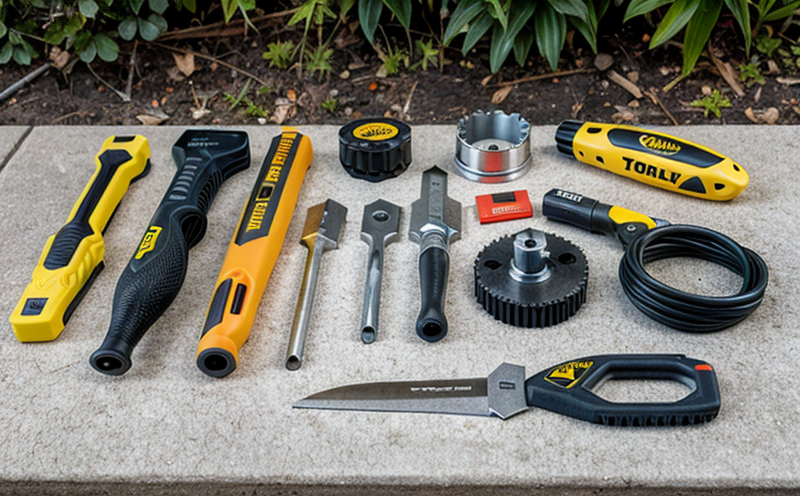Leakage Current Testing in Electrical Tools
Leakage current testing is a critical procedure that ensures electrical tools meet safety standards by measuring unintended electric currents flowing between exposed conductive parts and the accessible external environment. This test is essential for consumer products and hardware items to prevent potential hazards such as electrocution, fires, or other accidents.
The process involves subjecting the tool to various operational conditions, including idle state, maximum load, and minimum load, to simulate real-world usage scenarios. During these tests, a specific voltage level is applied to the specimen, and the current flow is measured using calibrated test equipment.
For DIY tools, this testing ensures that even in cases of minor insulation damage, the leakage current remains within acceptable limits as defined by international standards such as IEC 60335-1. This standard provides detailed specifications for electrical safety requirements and test methods applicable to household appliances and similar equipment.
The testing procedure includes:
- Setting up the specimen with all accessories in place, including any optional attachments like bits or blades.
- Connecting the specimen to a suitable power supply that can deliver the specified voltage.
- Measuring leakage current at different operating conditions.
The data collected during these tests is crucial for ensuring compliance with safety regulations and provides valuable insights into product reliability. Compliance officers and R&D engineers rely on this information to make informed decisions about design modifications or process improvements.
In addition to the technical aspects, it's important to consider the impact of leakage current testing on the broader context of product development and quality assurance. By incorporating these tests early in the design cycle, manufacturers can identify potential issues before they become costly problems during production or post-market use.
Benefits
The benefits of leakage current testing extend beyond mere compliance; they offer tangible advantages that contribute significantly to product quality and user safety:
- Enhanced Safety: Ensures that tools do not pose a risk of electrical shock or fire, providing peace of mind for users.
- Regulatory Compliance: Helps manufacturers meet stringent international standards like IEC 60335-1, which is essential for market access and avoiding legal issues.
- Increased Brand Reputation: Demonstrates a commitment to quality and safety, which can enhance brand image and customer trust.
- Risk Mitigation: Reduces the likelihood of product recalls or legal challenges due to safety concerns.
By incorporating leakage current testing into their quality assurance processes, manufacturers can achieve these benefits while maintaining a competitive edge in the market.
Industry Applications
Leakage current testing is applicable across various industries where electrical tools are used. The primary sectors include:
- DIY and Home Improvement: Ensures safety for homeowners using power tools in domestic settings.
- Construction Industry: Guarantees the safety of workers operating heavy-duty equipment on construction sites.
- Horticulture: Protects gardeners from electrical hazards when using powered equipment near water sources or damp conditions.
In these industries, compliance with leakage current testing standards is not only a legal requirement but also an operational necessity. It helps to maintain high safety standards and ensures that tools perform reliably under diverse environmental conditions.
International Acceptance and Recognition
- IEC 60335-1: Provides comprehensive guidelines for electrical safety requirements, including leakage current testing procedures.
- EN 60335-1: European standard equivalent to IEC 60335-1, widely accepted in EU markets.
- National Standards: Many countries have their own national standards that align with or exceed these international guidelines. For instance, AS/NZS 3821:2019 is the Australian/New Zealand standard for electrical safety of household appliances and similar equipment.
The acceptance and recognition of these standards by regulatory bodies around the world ensure that products meet global safety criteria, facilitating seamless international trade. Compliance with these standards not only ensures product safety but also supports market access and consumer confidence.





